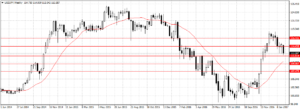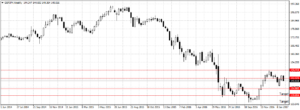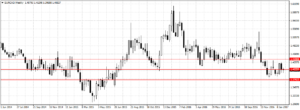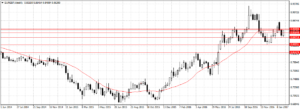Forex
Forex Weekly Outlook February 6-10
- Forex Weekly Outlook February 6-10
The US economy remains strong after data from the labor department showed the economy added 227,000 jobs in January. More than 157,000 jobs created in December. But the average hourly earnings drop to 2.5 percent from 2.9 percent year-on year, suggesting that the inflation rate may not be advancing as previously thought. Therefore, the Fed won’t be in rush to hike rates, at least not this March. This is one of the reasons the US dollar lost momentum against most of its counterparts except the British Pound last week.
Accordingly, the productivity level cooled in the fourth quarter to 1.3 percent from 3.5 percent recorded in the third quarter. This further affirm that businesses have relied on more hiring rather than investing in technology to increase efficiency. Still, the services sector expanded (56.5) in January at about the same pace as in the previous month.
However, the uncertainty surrounding the new government policies – fiscal spending, immigration, tax, etc. continued to weigh on the business outlook and dollar strength as businesses and foreign investors are yet to ascertain market direction.
In the U.K, the services sector contracted in January to 54.5 from 56.2 recorded in December as the costs of running a business surged to a 6-year high. The main concern now is the extent to which costs are rising and if it’s temporary or part of the issues raised by Governor Mark Carney on Thursday that there were risks to the economic outlook as the country start its Brexit journey.
Although the U.K. Monetary policy Committee upgraded its economic growth rate for 2017 from 1.4 percent to 2 percent, the governor reiterated that there are risks ahead and that the positive outlook does not negate Brexit consequences.
“The Brexit journey is really just beginning — while the direction of travel is clear, there will be twists and turns along the way,” the BOE governor Mark Carney told a press conference in London on Thursday. He said that with inflation accelerating and risks to growth on the horizon, “we can see scenarios in either direction” for policy.
With uncertainty growing from the US to the Europe, it is clear that commodities like gold and safe haven assets in general remain attractive as investors look to reduce risk exposure while looking for clues as to what the US and Theresa May led Brexit team plan to achieve going forward.
This week USDJPY and GBPJPY top my last for the reason stated above.
USDJPY
I first mentioned this pair sell potential three weeks ago, but rebounded with 78 pips to our first target to hit a mid-term high of 115.60. Ever since it has lost about 332 pips in the last three weeks.
However, with rising uncertainty in the US, investors are likely to continue to jump on safe haven assets like the yen to avoid the US dollar volatility. Hence, this pair is likely to continue its downward trend this week.
A break of 111.81 support would possibly increase the attractiveness of this pair and open up 109.56 support levels first established in April 2016, which is below 20-day moving average. Below is my previous quote on this pair.
This pair called the top after gaining about 1,384 pips since the emergence of Trump as the president of the U.S. But the pair lost about 250 pips following Trump’s first public conference last week to close at 114.43 support level. This, I will be treating as a risk concern ahead of the new administration’s inauguration. Therefore, I will be expecting the demand for the yen as a safe haven asset to increase while investors await a series of change the president-elect will be passing on to the senate and the ones likely to be approved.
GBPJPY
Three weeks ago, I mentioned here the uncertainty surrounding the British pound and why this pair offer unique sell opportunity. But with the pound sterling uncertainty confirmed by BOE unclear as the UK commence its Brexit journey, the embattled currency remains less attractive and it is likely to get worse by March, 2017 when the Brexit will be officially triggered.
While on the other hand, the yen remained attractive as investors scramble for the haven asset to reduce risk exposure and avoid volatility.
Again, the weekly candlestick closed as a bearish engulfed pattern, which was below 142.42 support levels –now resistance. With the present yen attractiveness, I will be looking to sell the pair below 142.42 resistance levels this week for 134.90 targets. A break of that level should open up 129.85 as the second target.
EURCAD
This week, I remain bearish on this pair for two reasons. One, the surge in risk level in the Euro-area will continue to weigh on euro-single currency. While Canadian dollar will likely remain attractive as commodities like crude oil gain and increase in investments in the country boost its manufacturing sector amid Trump likely favoured trade policy.
EURGBP
This pair lost its gains after the Bank of England Governor Mark Carney statement alerting investors to potential risk ahead of Brexit. Hence I will be standing aside this week to monitor price action and comments from the UK policy makers.



